Tara Gaab, V’17
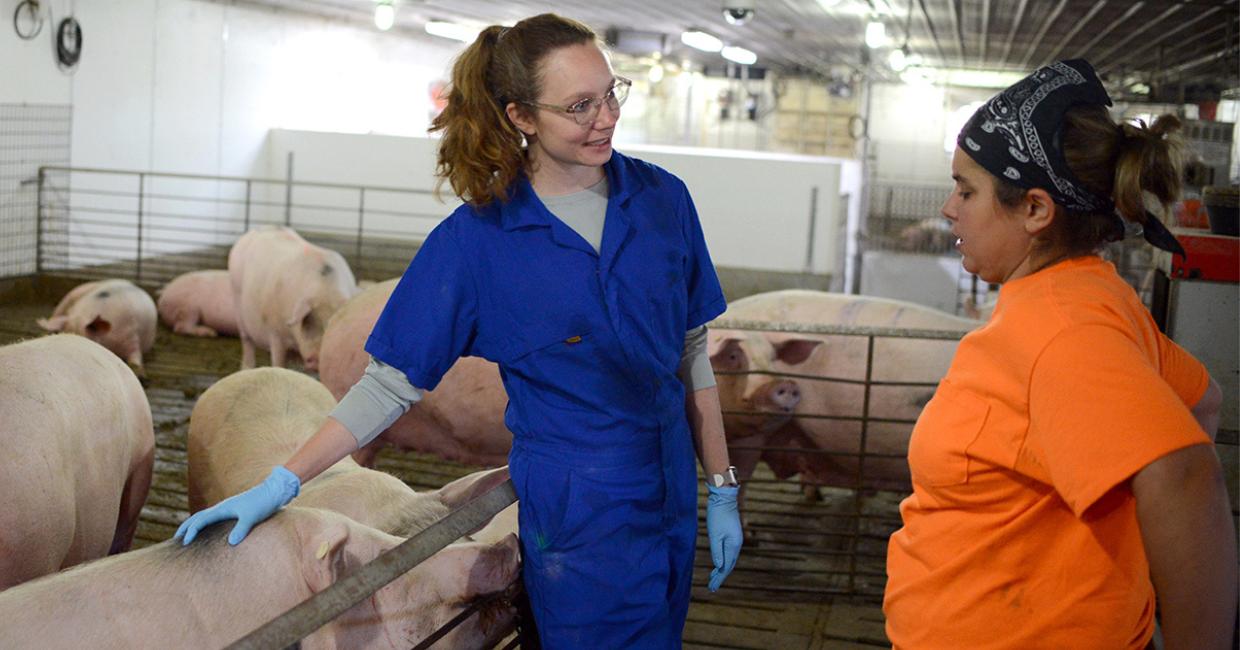
Tara Gaab’s “a-ha” career moment happened during a sleepover with pigs between her second and third years of vet school. At the time, Gaab was working on a research project with Thomas Parsons, VMD, PhD, director of Penn Vet’s Swine Teaching & Research Center.
“Dr. Parsons was looking at sleep as a way to assess the welfare of sows indirectly,” said Gaab, an assistant professor of animal science at the University of Delaware. She teaches animal science and health and welfare, including preventive care, husbandry practices, welfare compliance, and pain management and prevention in farm and fiber animals.
“We were studying the animals’ circadian rhythms. So, I’d sit there at night in the dark with all these dozing pigs and record their muscle twitches. I got to know them and their personalities and realized these are animals I want to work with.”
Tara Gaab had arrived at Penn Vet to pursue a career in zoo medicine, but the overnights with the snoring sows had her thinking otherwise.
Owning an Identity
Coming to Penn Vet with a degree in animal science from Penn State, Tara Gaab brought her experience with dairy cattle and other agricultural animals. “My vet school classmates saw me as the farm animal person, even though I saw myself as a zoo and wildlife person,” she said. “They’d ask me about pigs and cows — why and how they do things. I was the go-to, kind of a curiosity.”
Then, around the time of the sleep study, Tara Gaab started owning the identity of farm and fiber animal student and moving away from zoo and wildlife medicine.
“I was increasingly interested in the health and welfare of agriculture animals — pigs, cows, sheep, chickens,” said Gaab. “Tom and Meghann [Pierdon, VMD, leader of food security for Penn Vet’s Center for Stewardship Agriculture and Food Security] were big influences on me — they’re pioneers in animal welfare.”
Parsons, also the Marie A. Moore Professor of Animal Welfare and Ethics, and Pierdon led the formation and recent launch of Penn Vet’s Master of Science in Animal Welfare and Behavior.
After finishing at Penn Vet, Gaab was hours away from signing on with a private practice in central Pennsylvania when Dr. Billy Smith, associate professor of medicine in Field Service at Penn Vet, approached her about an internship with New Bolton Center’s farm animal field service. She accepted and then stayed on after the internship for a residency in the service.
“As I was finishing my residency and studying for my boards, the big question was whether I’d continue to do clinical work or go into academia,” said Gaab, who is board-certified by the American College of Animal Welfare. “I didn’t want to pick; I wanted to do both. I loved working with the field service. The team is wonderful — they’re family — and I developed deep connections with my clients.”
At the same time, “I wanted to focus more on the big ideas and ethical discussions around animal welfare.”
So, in 2022, when the position opened in the University of Delaware’s Department of Animal and Food Sciences, Gaab took the opportunity to transition from clinical care to teaching.
So Much to Consider
In her faculty role, Gaab is helping to bolster the university’s animal science and pre-veterinary medicine programs.
“With clinical care, you think of the medicine — the surgery, pain relief, that kind of thing,” said Gaab. “But there’s so much more to think about, talk about, and introduce people to.”
She’s speaking of animal welfare, which focuses on an animal’s current state of being.
“There are five basic components we look at in animal welfare: freedom from hunger and thirst; from discomfort; from pain, injury, and disease; freedom from fear and distress; and freedom to express normal and natural behavior. Our goal is always the gold standard of the best life ever,” she explained, adding that welfare is more than an ethical consideration.
“The animal welfare discipline is rooted in science and research. Ethics and morals are how we view the world and live our lives. They inform some of what we choose to research in animal welfare, but the recommendations we make and things we know to be true are science-based.”
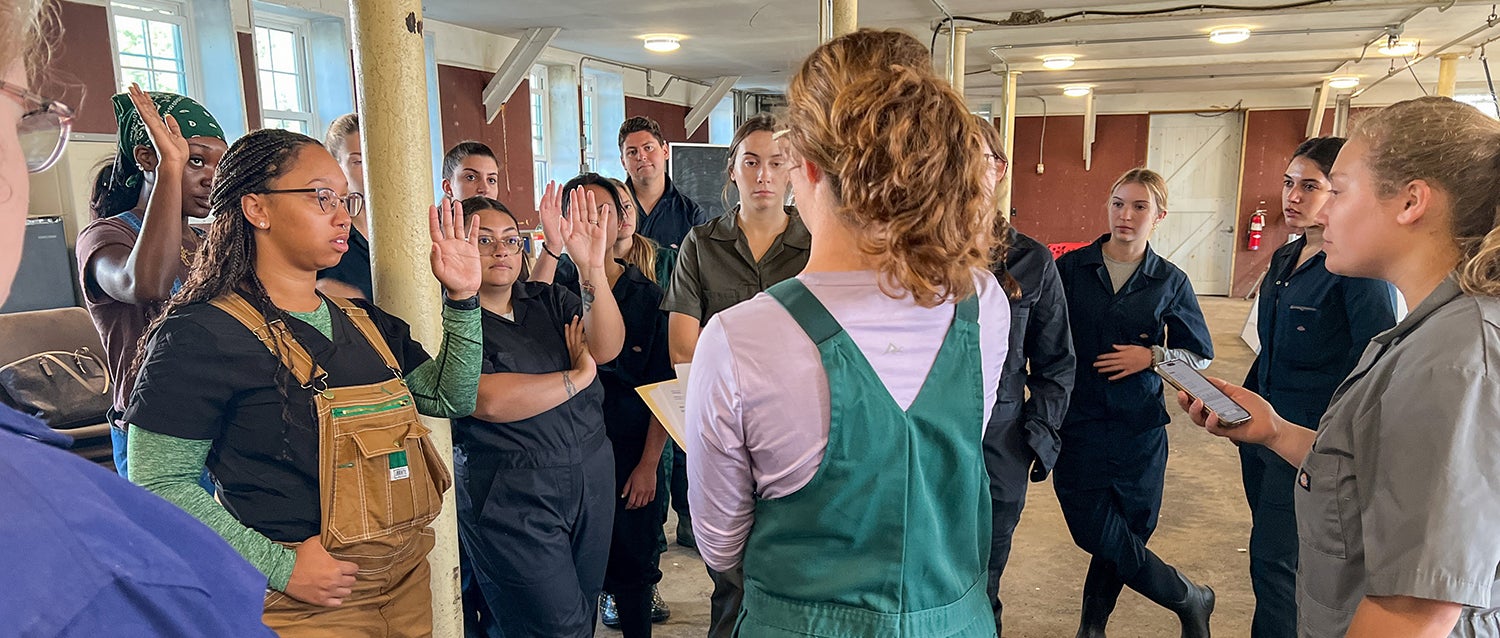
At the University of Delaware, Gaab integrates animal welfare topics into the school’s animal science, pre-veterinary medicine, and animal biosciences curricula.
“Most of my students are pre-vet track and headed to vet school or animal science majors that want to do a PhD or go straight into the industry,” she said. “My hope is they take what they learn here to whatever their careers are so that animal welfare and well-being become a standard consideration in all areas related to animal health and care.”
Classroom Back to Farm
Although Gaab left full-time clinical service for higher education, she continues to practice part-time, advising the Delaware County 4-H program and consulting at New Bolton Center as the Swine Center’s veterinarian.
“I do a farm check at the Swine Center once a week, making sure the pigs look how they should, answering questions about animals, and doing ultrasounds,” said Gaab. “I’ll sometimes have undergrad students come with me to get hours for vet school, and often Penn Vet students are there too. There’s always someone hanging out to learn more.”
Gaab knows many of these students have already established career goals, and she also understands that you can’t know what you’ll do until you get there.
“I always tell my students that whatever you think you’re going to do is probably not what you will actually do,” she said. “I encourage them to say yes to everything and go outside their comfort zones. I once thought pigs were gross and weird and scary, but they are a huge part of my life now. I love them and love what I’m doing. Will I do this forever and retire? Maybe, maybe not. I don’t know. But I think something cool about veterinary medicine is that you can always evolve—there are many pathways.”
More from Bellwether
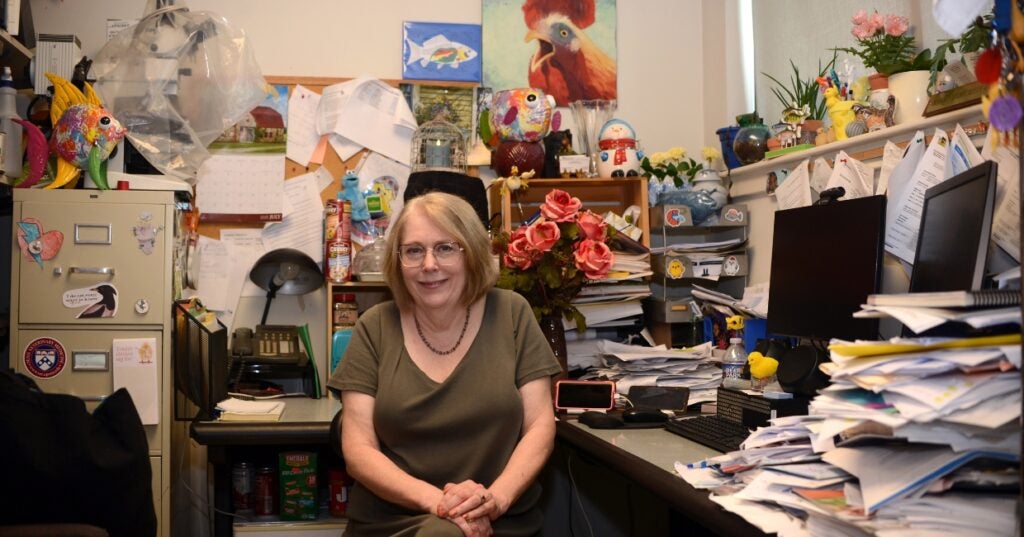
In the Office with Donna Kelly, DVM, MASCP, DACPV, DACVPM
Donna Kelly, DVM, MASCP, DACPV, DACVPM, shares her New Bolton Center office with the campus’s microbiology reference library.
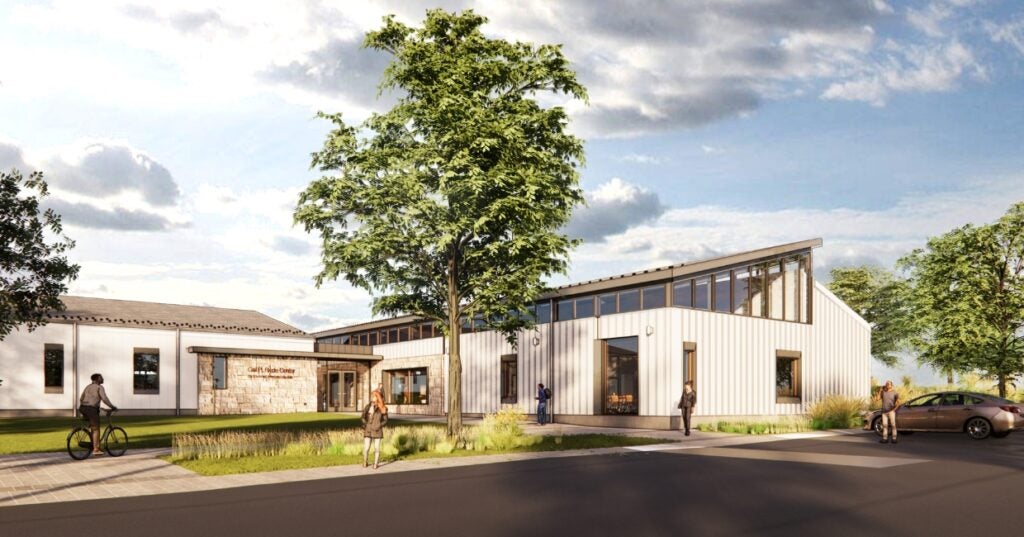
Breaking New Ground: Penn Vet Builds Future-Ready Learning Hub
Set to open in the coming months, the 11,800-square-foot clinical skills center will be the first dedicated classroom space on the Kennett Square campus, ushering in a new era of…
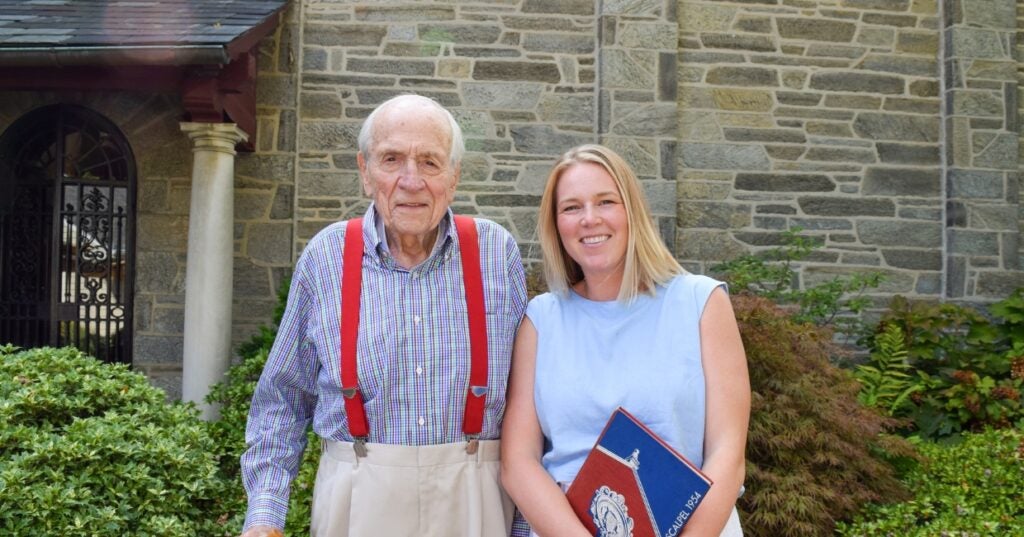
A Love of Animals and the Land
The Penn Vet of Dean Snyder, V’54, was a very different place than today. So was the world.
